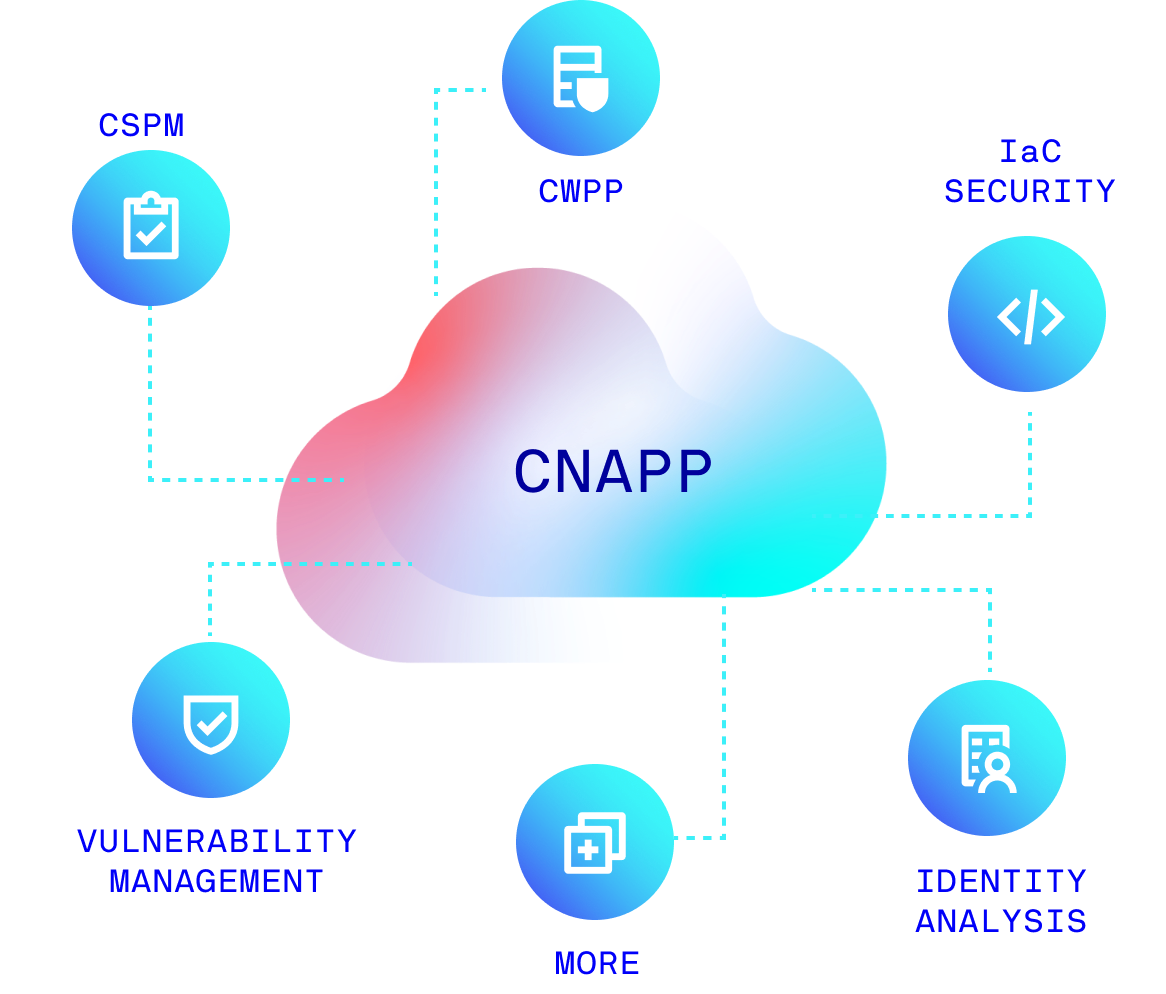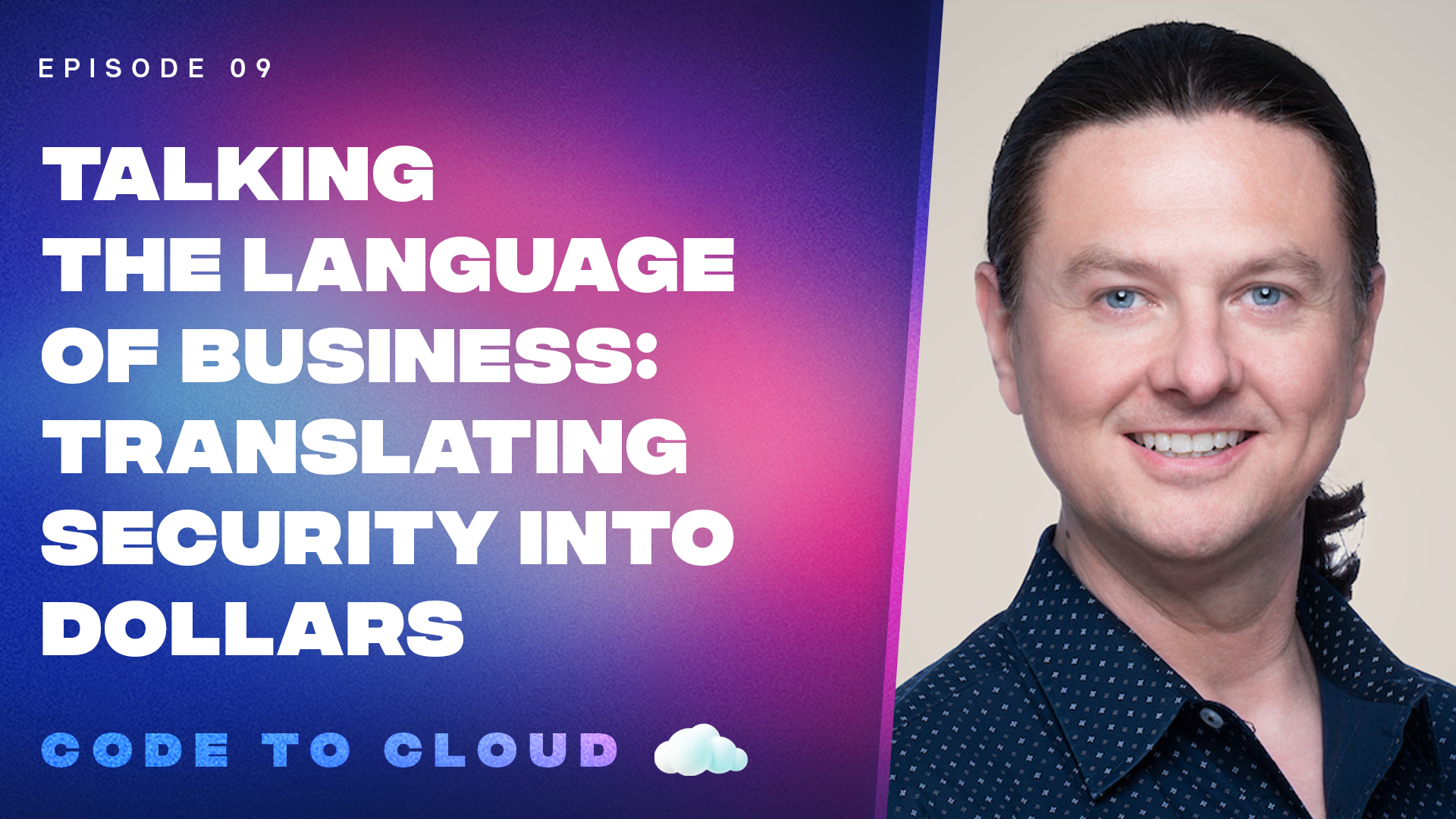CNAPP: What is it and why is it important for security leaders?
As security leaders are tasked with accomplishing more with fewer resources, they’re looking for ways to consolidate tools and maximize investments. Relying on multiple security solutions is no longer sustainable because it results in security gaps, blind spots, and confusion in security management and reporting—and on top of that, it’s expensive.
Until recently, security leaders didn’t have many better options; but fortunately, that’s no longer the case, because Cloud-Native Application Protection Platforms (CNAPPs) have entered the picture. “CNAPP” isn’t just another buzzword in the security world, it’s an all-encompassing solution to the security challenges businesses have been struggling with. In this blog, we’ll break down what a CNAPP is and how it can help security leaders improve their businesses’ security posture.
CNAPP: The comprehensive cloud security solution
CNAPPs are security tools that combine various cloud security capabilities into one holistic platform. They provide a more efficient approach by breaking down cloud siloes, ingesting data across the cloud, and making sense of it all through automation.
Key components of a CNAPP
So what makes up a CNAPP? To break down everything a CNAPP can do, let’s compare it to your house. Just like a secure home combines several elements to protect the people who live there, a CNAPP has various security components that play a critical role in securing your cloud environment.

Cloud Security Posture Management (CSPM)
CSPM plays a pivotal role in a CNAPP’s functionality. CSPM tools automate security processes, detect potential risks, and ensure compliance across cloud-based assets and services. By evaluating and contrasting cloud environments against industry best practices and known security threats, CSPM tools proficiently detect and rectify issues such as misconfigurations, vulnerabilities, and policy violations.
You could compare this to assessing the overall security of your home. It’s the process of continually monitoring and managing the security status of your house—for example, checking for open windows or doors, ensuring the locks are functioning properly, and so forth. It’s your broad view of your home’s security state and involves identifying and remediating risks.
Cloud Workload Protection Platforms (CWPP)
A workload is a collection of instances or containers working together. CWPPs continuously monitor and secure all cloud workloads, accommodating them at scale. CWPPs provide security controls like threat detection, intrusion prevention, anti-malware, application control, vulnerability monitoring, and more.
CWPP can be compared to the specific security measures you put in place to protect individual rooms or areas in your house. Just as you may have different locks or security devices for your front door, back door, and windows, CWPP secures different workloads running in the cloud. These systems protect against unauthorized access and alert you when a potential breach occurs. Similarly, CWPPs protect cloud workloads against threats and vulnerabilities, alerting your security teams when there’s an issue.
Cloud Infrastructure Entitlement Management (CIEM)
CIEM solutions extend traditional identity and access management (IAM) principles beyond people to include non-human resources and services within the cloud. Tools in this category help you apply the principle of least privilege and to make sure that it stays applied.
CIEM can be compared to managing who has access to your house and to specific areas within it. For instance, you might give keys to family members, a security code to a trusted neighbor, and perhaps a limited access code to a cleaning service. In a similar way, CIEM manages who has access to what resources in your cloud infrastructure, ensuring that individuals and services only have the minimum necessary access to perform their functions.
Shift left security capabilities
“Shift left” security incorporates early security checks into the cloud application development lifecycle, allowing safe and secure code development and deployment.
This is similar to preventative maintenance in your home. Rather than waiting for a problem to occur, you proactively address potential issues. By regularly cleaning gutters, for example, you can prevent water damage. “Shift left” security operates in the same way. It involves integrating security early in the development process, helping to identify and address potential security vulnerabilities before your applications are deployed, just like preventing a problem before it even starts in your home.
Infrastructure as Code (IaC) security
With IaC security, developers can automate the provisioning of cloud infrastructure. IaC security solutions help identify and rectify misconfigurations and compliance violations early in the build process, saving time and resources.
IaC security would be like the blueprints for your house. It ensures that the foundational designs (or code) for your cloud infrastructure are secure. This is like making sure your house blueprints have accounted for secure entrances and exits, visibility of entrances, and so on.
Code vulnerability scanning
Code vulnerability scanning is like checking the materials used to build your house to make sure they are robust and meet all safety standards. In the same way, code vulnerability scanning checks your software code for potential weaknesses that could be exploited by attackers.
Why security leaders should care about CNAPP
For security leaders such as CISOs who want to bolster their cloud-native application security and consolidate tools, CNAPPs are indispensable. And with all of the benefits a CNAPP can provide businesses, it’s no surprise that the global CNAPP market is expected to expand at a compound annual growth rate of 25.7% from 2021 to 2026. Here are just a few of the ways they can make life easier for security leaders.
Enhance security posture
As cloud-native applications continue to gain popularity, CNAPPs offer an all-encompassing security solution that covers their entire lifecycle from deployment to runtime. Through proactive threat identification and mitigation, CNAPPs enhance your security posture, reduce attack surfaces, and protect applications against attacks.
Improve visibility and control
One of the key advantages of CNAPPs for security leaders is the real-time visibility they provide into cloud-native application behaviors. This enables the swift detection and response to security incidents, facilitates control over the cloud-native application environment, and helps identify and detect attacks that may otherwise go unnoticed.
Enhance threat detection and response
CNAPPs are designed to continuously monitor and protect cloud-native applications, providing a crucial layer of security. By seamlessly integrating with existing security tools and infrastructure, CNAPPs enable security leaders to detect and respond to threats in real-time, thereby minimizing the risk of a security breach.
Facilitate compliance with security regulations
For security leaders, compliance with security regulations is a top priority. CNAPPs furnish the necessary controls and reporting capabilities to meet regulatory requirements, such as PCI DSS, HIPAA, and the newly proposed National Cybersecurity Strategy. By using CNAPPs, security leaders can confidently demonstrate to auditors that they have taken essential steps to secure their businesses, mitigating the risk of regulatory penalties.
Learn more about CNAPPs
CNAPPs are comprehensive platforms that negate the need for multiple point solutions, enabling businesses to tackle threats and risks efficiently and quickly. If you’re a security leader looking to deepen your understanding of CNAPP and how it can address your cloud security challenges, our eBook, CNAPP for Dummies, is the perfect resource. This user-friendly guide provides a comprehensive overview of the benefits of CNAPP and is a crucial resource for any organization that wants to cloud security and manage its cloud environment more effectively.
Categories
Suggested for you

Innovation at its best: Looking back at an unmatched year of recognition in cloud security

Doors and corners in cybersecurity: Protecting against known and unknown threats

